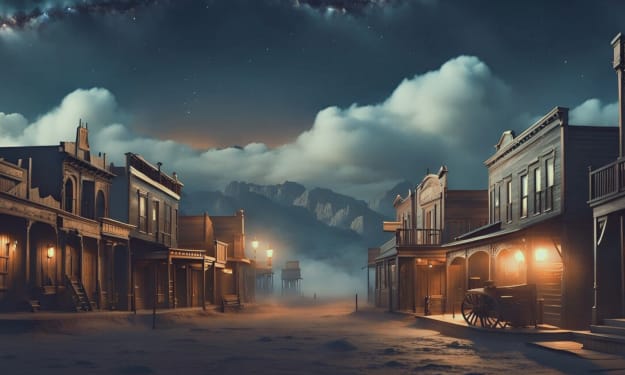Operation Damaliscus
Based on True Events

OPERATION DAMALISCUS: A Tale of Discovery and Tragedy -
I have always felt a deep connection to nature, and my partner Sian shared that same passion. Together, we embarked on a research project that would forever change our lives. Our focus was a remarkable herd of Blesbok (Damaliscus pygargus phillipsi), residing in the vast grasslands of certain parts of South Africa. These elegant antelopes, with their chestnut coats and striking white face blaze, captivated our hearts. So when we were approached to conduct a field research project, we were overjoyed, and jumped at the opportunity.
But our joy was short-lived when we discovered that the land the Blesbok called home had been marked for low-cost housing. Determined to protect the herd, we decided to dedicate ourselves to finding them a new habitat where they could thrive. We knew it wouldn't be easy: Blesbok are incredibly particular when it came to their environment, grazing only on specific types of grass.
Our research project became an all-consuming quest to discover the ideal grass species that would sustain the herd. We observed the Blesbok tirelessly, noting their grazing habits and studying the grasses they preferred. With each passing day, we unravelled the intricate connection between the antelopes and their environment.
In our pursuit of knowledge, we made an astonishing discovery with the help of my father, who was a geologist and part of the team. Beneath the surface of the grasslands lay a complex network of geological strata. These underlying formations influenced the growth and distribution of certain grass species. It was a revelation that would shape our entire understanding of the ecosystem.
But the surprises didn't end there. As we observed the Blesbok, we realized they were not just passive inhabitants of their environment; they actively contributed to its prosperity. Their selective grazing kept the grass short, allowing sunlight to reach the soil. In turn, this encouraged the growth of more nutritious grasses, forming a cycle of vitality. Furthermore, their excrement enriched the soil, providing essential nutrients for the grass to thrive.
The research lasted for almost a year, during which time our regard for these magnificent creatures became stronger and stronger. We were even to distinguish certain of the territorial males – those whose territories were some distance from the herd – by their distinctive markings. It also came to our attention that, rather than just trying to evade us as we approached, these males were actually running to the next midden, a pile of dung used as a marker to show where these borders were.
Armed with this knowledge, we could even plot where the boundaries of the domains lay. This we tested by watching the individual male’s reaction as we approached. Blesbok have a distinctive alarm call, which sounds a bit like a sneeze, and it came to our attention that they would make the sound when we were too close, or even on the male’s turf. However, as soon as we stepped outside of his purlieus, he would stop and continue grazing.
Our research concluded, we approached the conservation group that had enlisted our help. Together, we held numerous meetings and discussions, sharing our insights and proposing a plan for the relocation of the Blesbok herd. Excitement filled the air as we collaborated to find a suitable plot of land that mirrored the geological strata and provided the right grass species.
We met in Johannesburg, and after a week of intense deliberation, we returned to the farm where the Blesbok resided, eager to start the relocation process. But our anticipation quickly turned to horror as we stumbled upon a devastating scene: Strewn across the once-lush grasslands were the lifeless bodies of the entire herd, left to decay. It was an unimaginable act of cruelty.
Shattered and enraged, we realized that a group of ruthless gunmen had been hired by the developer to eradicate the herd. The innocence of the Blesbok had been callously wiped out in the name of profit and progress. Grief overwhelmed us, tears streaming down our faces as we knelt beside the one of the fallen antelope.
With heavy hearts, we resolved to seek justice for the Blesbok. We documented the gruesome evidence, determined to hold the perpetrators accountable for their heartless actions. Simultaneously, we reached out to the conservation group, informing them of the tragedy that had unfolded.
Together, we launched an extensive investigation, tirelessly pursuing leads and rallying support from wildlife protection agencies and law enforcement. The evidence stacked up against the developer and their hired gunmen, revealing the true extent of their malevolence.
Finally, the day of reckoning arrived. In the courtroom, we stood firm, united in our determination to bring justice for the fallen herd. We presented our meticulously gathered evidence, painting a vivid picture of the lives lost and the devastating consequences of greed.
The verdict was resounding. The ruthless gunmen were convicted, and the developer faced severe penalties for their role in the massacre. While it was a bitter-sweet victory, it brought some solace to know that those responsible would face the consequences of their actions.
In the aftermath, we channelled our grief into advocacy, fighting for stricter laws and regulations to protect wildlife and their habitats. The tragic loss of the Blesbok herd only fuelled our determination to try and ensure that such atrocities would never be repeated.
Though forever scarred by the tragedy, our love for nature burned brighter than ever. Together, we vowed to honour the fallen Blesbok by dedicating our lives to conservation and the pursuit of a harmonious coexistence between humans and wildlife. With every step we took, we carried the memories of the Blesbok and the hope that their legacy would inspire others to join us on this vital journey.
Our focus has since shifted, and now we use our talents, myself as an artist and Sian as a writer, to champion the cause of endangered and threatened species around the world. Our endeavour is a tribute to those brave creatures whose lives were so meaninglessly and ruthlessly taken because of the greed of certain individuals.
About the Creator
Tristan Biggs
I was born in Rhodesia (now called Zimbabwe) and currently live in South Africa. From an early age, I seemed to have a knack for poetry. I have written a number of stories, poems, and several novels, ranging from fantasy to non fiction.






Comments
There are no comments for this story
Be the first to respond and start the conversation.